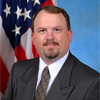Ever since the Cloud First initiative in 2010, agencies have been moving toward a hybrid approach. Some applications and data will remain on premise while others will move to public or private clouds.
This is and will continue to be a fact of federal technology for the foreseeable future.
Gartner Research found the use of public cloud services are expected to grow by 17% on average through 2021.
Deltek also estimates that spending on cloud services is expected to grow to more than $9 billion by 2024, which is a five times increase over what they spent in 2016.
And agencies have learned over the last few years, and particularly during the coronavirus pandemic the value of having this multi-cloud approach.
The General Services Administration laid out the simple and straightforward benefits of a hybrid cloud approach in a 2016 white paper that still resonate today. It says hybrid cloud is valuable for dynamic or highly changeable workloads that can deal with significant demand spikes. This is especially true as agencies push the cloud to the edge.
Another good hybrid cloud use case is big data processing where an agency could use hybrid cloud storage to retain its accumulated data and run analytics against it.
But GSA also says agency CIOs must identify operational and business benefits of implementing a hybrid cloud and build the business case to support their strategy because as with any technology there are risks.
Cameron Chehreh, the federal chief technology officer for Dell Technologies, said agencies need to live by the three laws of cloud:
- Economics-Not everything is a good candidate to move to the cloud. There are supplemental costs with legacy applications because they require more and more interfaces.
- Land—This is about compliance of statutory and regulatory requirements, and making sure agencies can leverage the security profile hybrid cloud can provide.
- Physics–Networks have latency and so being able to put workload in a location best suited for the user community is what is driving a lot of organizations to a hybrid cloud model.
The Current Cloud Approach
Over the last 10 years our strategy has changed dramatically and now we are at the point where the department’s look is really cloud first and traditional hosting or traditional data centers or even hybrid cloud capabilities as kind of a secondary focus. There is more and more of a push to move to a software-as-a-service in a pure cloud environment using hybrid cloud really for how do we transition the more legacy type applications into the cloud environment.
John Hale
Chief, Cloud Services, Defense Information Systems Agency
Cloud Tools and the User Experience
This is the new normal. It will not be the pre-pandemic and post-pandemic. It will be the new network. 9/11, in some ways, revolutionized security where there was a forcing function and forced a harder look at security. You are seeing this with the pandemic, [as we are] taking a harder look at the network and the capability to do analytics because analytics is the key to success to opening things back up.
David Peed
Vice President and General Manager, Equinix Government Solutions
Addressing Security in the Cloud
With COVID-19 and the advent of TIC 3.0, which provides for that ability to set up your security in a more point of presence nature, we have been leaning very heavily into leveraging that to expand our telework capacity. We are doing a lot with application defenses and leveraging a lot of cloud native monitoring and instrumentation capabilities.
David Catanoso
Director, Enterprise Cloud Solutions Office, Department of Veterans Affairs
Listen to the full show:
Copyright
© 2024 Federal News Network. All rights reserved. This website is not intended for users located within the European Economic Area.













